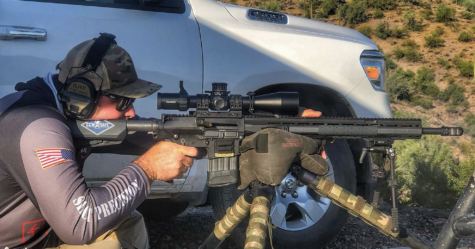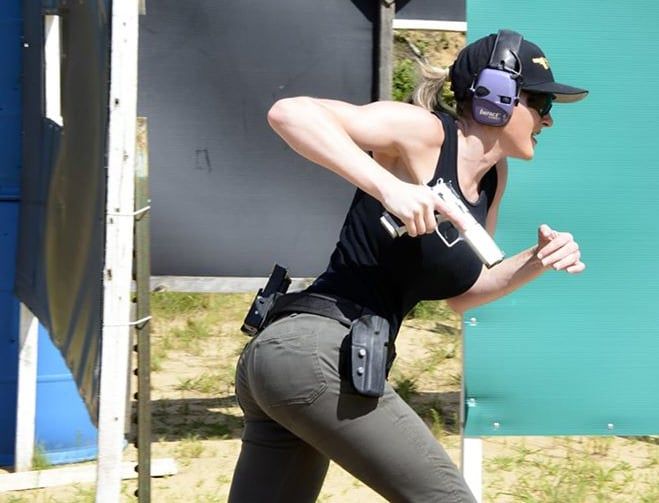
When it comes to movement in the world of shooting sports, few know more than 180 Firearms Training’s Kita Busse, author of Smart Move: Economy of Motion for the Shooting Sports. The book explains efficient movement with a firearm for the practical shooting sports.
To learn some basics on shooting and movement, we recently sat down with Kita to learn the do’s and don’ts when it comes to shooting and movement.
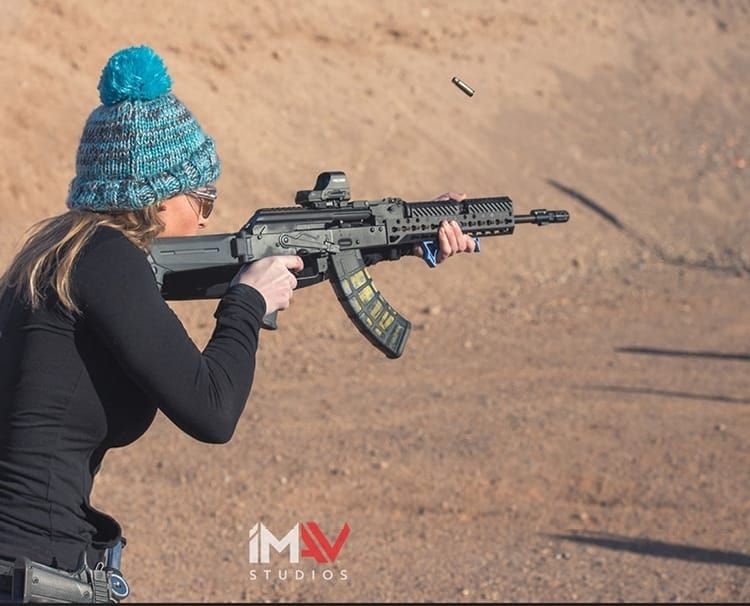
Q: Kita, can you walk us through how your interest in shooting and movement began?
Kita Busse – When I was seventeen, I enlisted in the Army. I qualified “expert” right away…I had never touched a gun before in my life. That was not because my family was opposed to it or anything – we were just poor, so we really didn’t have any around. I qualified “expert” and found out I had an aptitude for it, and when I got out, I had never touched a pistol, so that was the one gun that I was inquisitive about. I started looking into how to shoot a pistol and learned about shooting sports.
My first competition was USPSA around 2010. But what you have to understand is that the sport was in a very different place than it is now. After watching competitions and asking a lot of questions, and realizing that the scoring was points divided by times, I didn’t understand why people were shooting and moving the way that they were.
“It just did not compute…”
At that time, people would shoot really, really fast and then sort of meander onto the next position, and then again shoot really, really fast. I didn’t understand why they were moving that way because you could see that it was costing them a lot of time. It just did not compute. I ended up becoming very curious, and I did some testing with some of the better shooters in the area.
I had them try some things for me, and I saw that their scores dramatically improved. That made me even more curious about shooting and movement, and I started researching. I quickly learned that there really wasn’t any research available on movement for the shooting sports.
I looked into other sports, figuring that there had to be research that was already out there that could be applicable. I looked at other sports and learned what worked for those particular situations, and then tested those things on the top shooters in the world. I was able to bring their times down significantly. It has really changed the way our sport is done today. Now, it’s not just “shoot as fast as you can, and meander to the next position.” It’s now “shoot as fast as you can, run as fast as you can to the next position…”
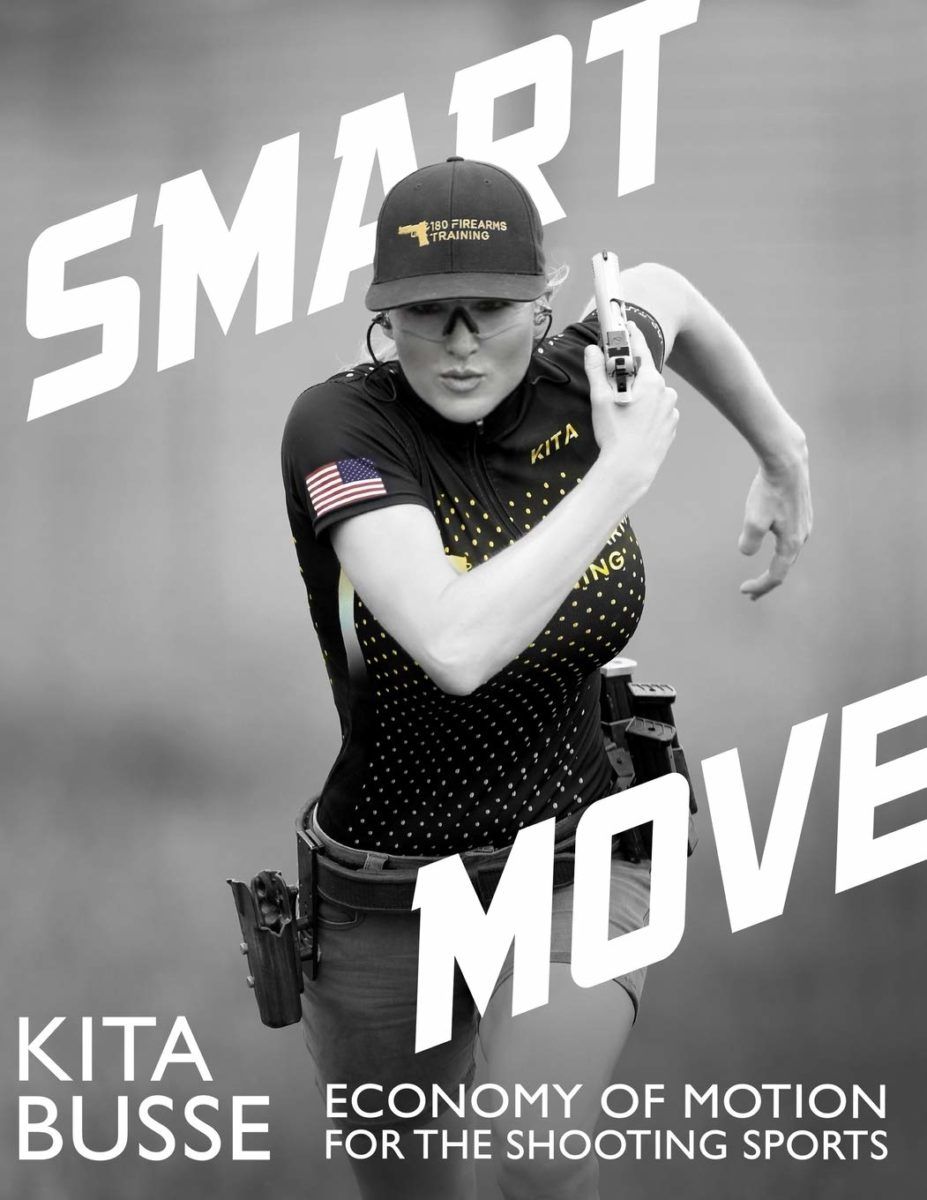
Q: What sports did you look at to learn more about shooting and movement?
Kita Busse – I looked at everything, really. Soccer, football, basketball, baseball, hockey. I looked at every sport you could think of and learned what their proven techniques were. One interesting thing I found was the idea of the “drop step.”
It’s where you’re shooting, leaning out of position, and then you take a step in the opposite direction of where you want to go in order to propel yourself in the right direction. There are a lot of shooters who do this in every single position because they felt they were faster…but they were adding a step in the wrong direction to move in the right direction. At first, the drop step was considered to be inefficient in other sports for that reason. I was discovered that more elite athletes who were very well trained and who had explosive power were actually not losing any time by doing the drop step.
Unfortunately, most people don’t train that way and don’t have that explosive power. So, yes, when most were doing the drop step from every position, they were, in fact, losing time.
As I was working with top shooters, testing methods, and seeing what worked and carried over from other sports, I was able to learn what was most successful for them in regards to shooting and movement. My head was just bursting with all of this newfound knowledge that I had gained from all of the experiments we had done. I just had to get it out, and I just started brain-dumping all of the things that I thought might help people…and that turned into a 300-page book. I just couldn’t contain it.

Q: Did 180 Firearms Training come about before or after the book?
Kita Busse – 180 Firearms Training came before. In 2010, I began coaching a shooter who then went on to become a world champion. I started traveling the world, teaching classes with that shooter.
In 2014, we parted ways, and I started my own company that just did movement. When we worked together, shooting was taught on one day, and I taught movement the other day.
When I went off on my own, I decided to just focus on movement, figuring that there are tons of other people teaching everything else, but not so much with movement…and that’s how 180 Firearms Training came about.
Q: What are some of the things that we should not be doing?
Kita Busse – It’s interesting that a lot of times, people who become shooters never really participated in a sport. They grew up playing shooting video games, and then they get into shooting. Some do, of course…but for many, they don’t have that athletic ability behind what they are doing on the range. This means, when it comes to shooting and movement, they don’t understand how to move athletically. The drop step is an excellent example of one of those things, and it ends up adding time to their stage.
Another thing is just not being able to calculate risk versus reward. For example, shooting falling out of position is a high risk, because you could end up with a failure to engage, which gives you penalty points.
Then you find yourself outside of the position, and you either have to get back in and engage the target, or take the penalty…you need to decide those risks before you ever start shooting.
Shooting and Movement – Basic Do’s and Don’ts
Getting low is another thing that a lot of people do not do. If you are down lower, you have more spring in your muscles that is available to you. You are shock-absorbing your sights more.
People take really big, lurching steps. It’s actually better to take tiny, fast steps to speed up or slow down. This is especially the case when you are slowing down, because you are catching your weight little by little, rather than in one lurching step, catching it all at once. Not only is that hard on your joints and can cause injuries, or you can fall or even overrun a position, but it’s a lot harder to decelerate with catching it all in one step, rather than little by little with tiny, fast steps.
Another thing is popping up into position. When you enter into a position, a lot of people will stand up tall because when they practice a stand and shoot on their own at the range, they will stand up pretty tall…that’s their comfortable shooting stance, and that’s what they automatically go back to.
The problem is, it takes a tenth of a second to stand up to your full height and then get back down again to move to get out of the position. That adds a tenth of a second to every single stage for an entire match, which adds up to a lot of time.
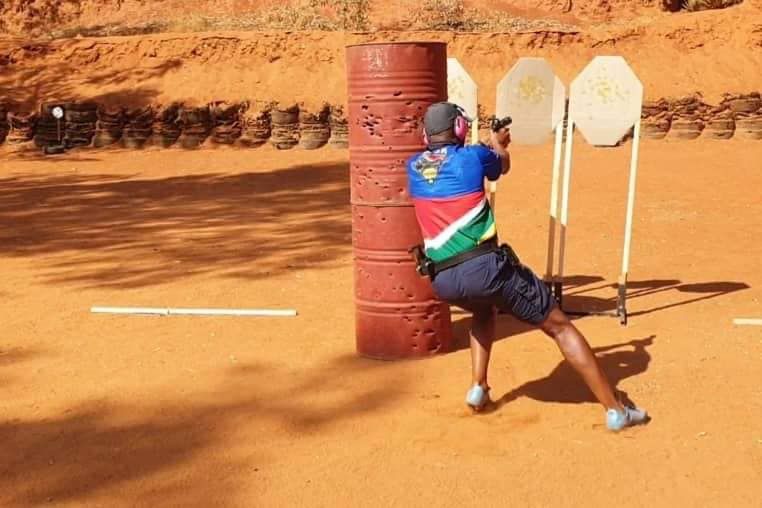
Q: Are there things that we should do in regard to movement?
Kita Busse – “Get low and stay low” is the biggest one. A lot of people pop up into position, or they do these “tactical bunny hops.” A lot of people feel like jumping is faster because it feels faster…but it is actually slower because you have no contact with the ground. It’s also not a steady base for you to shoot from, and if you’re not in contact with the ground, you are not applying pressure to the ground, and the ground can’t be applying force back to your body to propel you.
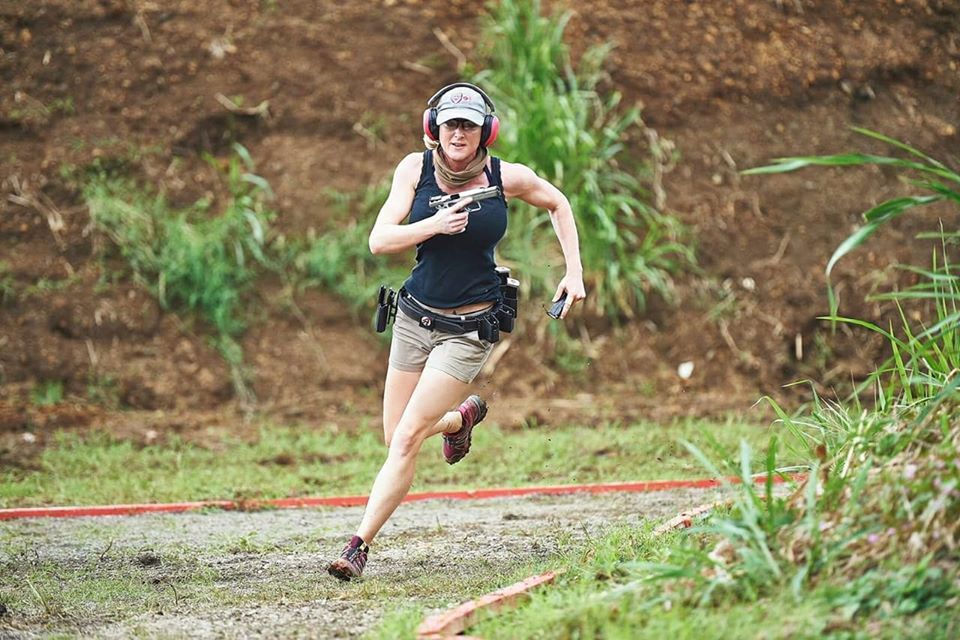
The other thing that you should remember is the idea of taking small steps. If you are accelerating, decelerating, or moving around obstacles, you should be taking tiny steps instead of big lurching steps. The only time you should be taking big steps is if you have reached a full, flat-out sprint…
Q: You offer classes as well as video critiques, is that correct?
Kita Busse – I do both. I train people all over the world, but there are also places I can’t go to, or if I perhaps do not have a class in a particular area, people can send me videos to my email or they can sign up on the website.
They can Dropbox three videos for $50, and I run it through an app where I can slow it down, pause it, voice-over it, draw angles, make other drawings on it to show them exactly what they are doing, and then I give them drills telling them how they can fix it.
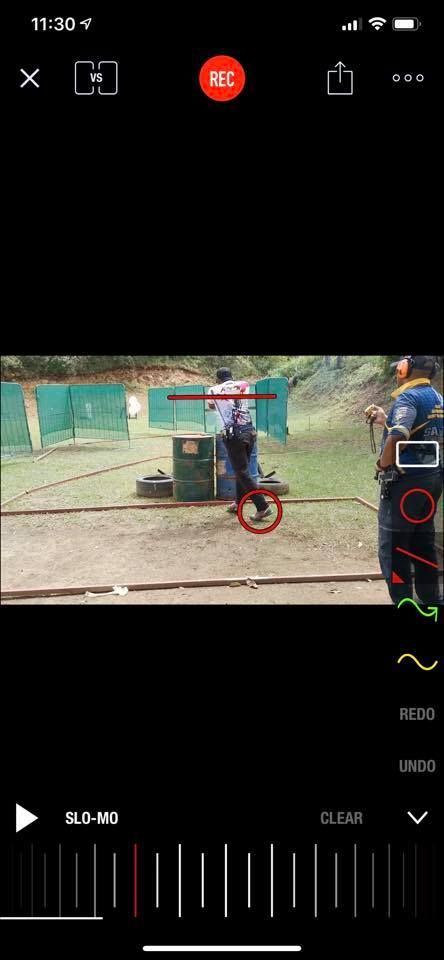
Q: Is this just for competition, or are there areas where other shooters could benefit. Perhaps for self-defense, law enforcement, and military?
Kita Busse – It is absolutely relatable. I’ve had SWAT guys come to the class, I’ve had…I can’t even tell you (laughs) some of the guys who have taken classes from me. They have very much appreciated us because their lives depend on it.
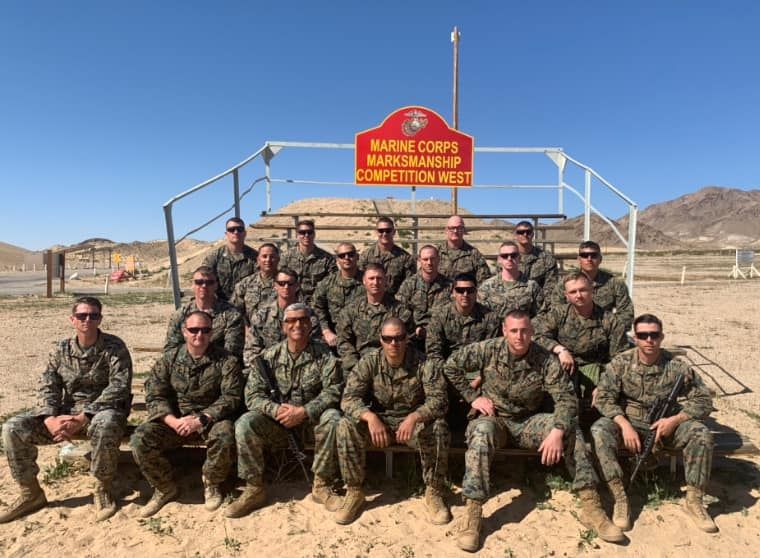
You can be moving at full speed and doing a reload without having to wait until you’re behind cover, and it doesn’t waste you any time. If you can move that much more efficiently, you’re going to get to cover a lot faster. I also teach people how to get into and out of awkward positions much easier.
Q: Is there anything I have not asked about shooting and movement that you’d like to talk about?
Kita Busse – Movement is not just what you do with your feet. It is your whole body, and that includes your eyes. If you’ve ever done race car driving, you know that you go where you look. It is actually more important to train your eyes where to go in a stage than it is to train your feet where to go. Your eyes are going to lead everything else, and so I also teach eye training.
Resistance training is also something that is important that I teach. You can decide you’re going to go faster, and you will move faster, but you cannot choose to use your muscles at 100 percent. That has to be trained. You can train yourself to recruit your muscle fibers to work at 100 percent by using resistance training. So, I use resistance training to help shooters move faster and trick their bodies into moving faster. The other thing resistance training does is it shows where there are inefficiencies. Let’s say you don’t have a steady base to shoot from, and you have a weight vest or a plate carrier on; you’re going to feel it. You’re going to end up falling over. So, it forces you to set up from a steady base to shoot from, which ends up improving your accuracy.
###





